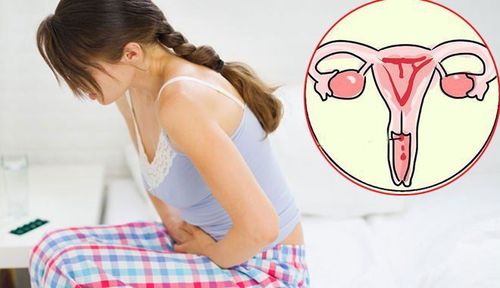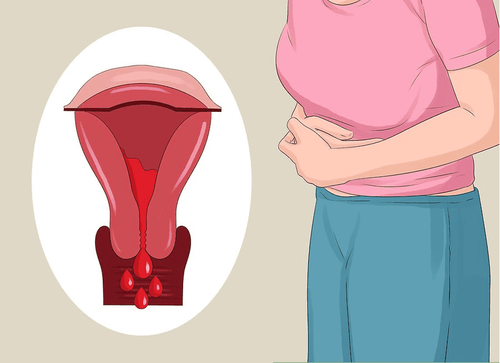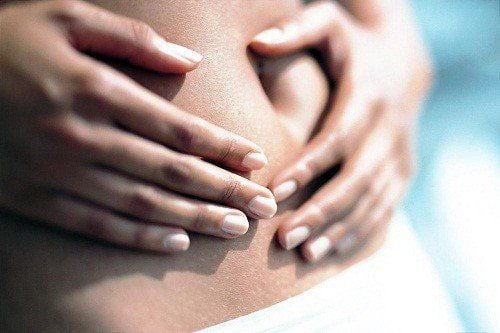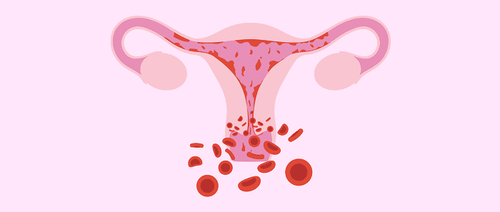This is an automatically translated article.
The article was professionally consulted by Specialist Doctor I Pham Thi Yen - Department of Obstetrics and Gynecology - Vinmec Hai Phong International General Hospital.Women often experience abdominal pain during menstruation is one of the manifestations of endometriosis. This is a benign disease, but causes a lot of inconvenience and pain to the patient every time the menstrual period comes, and can even lead to infertility in women.
1. What is endometriosis?
Endometriosis is a condition that occurs when endometrial cells (or the endometrium, which is the type of tissue that forms the lining of the uterus) are found outside a woman's uterus. The disease can cause infertility due to its ability to damage the fallopian tubes and fallopian tubes, leading to obstruction of fallopian tube motility and disturbance of ovulation.2. Is the disease common?
About 1 in 10 women of reproductive age have endometriosis. The disease is usually diagnosed in women between the ages of 30 and 40.3. Endometriosis usually occurs in which areas of the body?
Endometrial tissue usually occurs in the following areas:The peritoneum (or peritoneum): A layer of serosa that covers the inner surface of the abdominal wall and covers all the organs of the digestive tract and a several other organs in the abdomen. Ovary . Oviduct . Outer surface of the uterus. Bladder, ureter. Intestines and rectum. The sacrum (the space behind the uterus, essentially a virtual cavity, at the lowest point of the abdomen).
4. The danger of endometriosis
Endometrial conditions appear in many places in the body in response to changes in the female hormone estrogen. These “lost” tissues can grow, causing bleeding similar to the lining of the uterus during a menstrual cycle. In addition, the condition affects surrounding tissues, causing irritation, inflammation, and swelling. The destruction and bleeding of these tissues each month causes the formation of scar tissue, called adhesions. Sometimes adhesions occur that can cause organs to stick together. Bleeding, inflammation, and scar tissue formation can potentially cause pain, especially around the time before and during menstruation.5. Possibility of infertility due to endometriosis
According to statistics, up to 40% of women with infertility are related to endometriosis. That's because inflammation from the disease can damage sperm or eggs during fertilization, or interfere with their movement through the fallopian tubes and through the uterus. In more severe cases, endometriosis can cause the fallopian tubes to be blocked by adhesions or scar tissue.6. Symptoms of endometriosis

7. Diagnosis of endometriosis
To diagnose the disease, the doctor may first order the patient to perform a physical exam, including a pelvic exam. However, the only way to definitively identify a patient with endometriosis is through a laparoscopic procedure. Sometimes, a doctor will remove a piece of tissue for testing. This procedure is called an endometrial biopsy.8. Treatment of endometriosis
Treatment depends on the severity, symptoms and treatment decisions of the patient. Endometriosis is treated with medication, surgery, or both. To deal with pain caused by disease, medication is the first priority.8.1. What drugs are used?
Medications used in the treatment of endometriosis, including: pain relievers, such as nonsteroidal anti-inflammatory drugs (NSAIDs), and hormone medications; examples include oral contraceptives, progestin-only pills, and gonadotropin-releasing hormone agonists. Hormonal drugs help slow the growth of endometrial tissue and prevent adhesions from occurring. These drugs usually cannot remove existing endometriosis tissue.8.2. Endometriosis surgery
Surgery is done to relieve pain and improve fertility. During surgery, endometrial tissue that occurs in different places in the body is removed.9. Does surgery cure endometriosis?
After surgery, most women stop the pain. However, pain symptoms can return, with a certain rate. Specifically, about 40-80% of women face pain that comes back 2 years after surgery. This is usually because at the time of surgery, endometriosis tissue cannot be completely identified or cannot be removed. On the other hand, the more severe the disease, the more likely it is to recur after surgery. Using oral contraceptives or certain other medications as prescribed after surgery can help prolong the time before a recurrence occurs.10. How to deal with severe pain that doesn't go away even with treatment
Some patients experience severe pain that does not go away after treatment, where a hysterectomy is the last resort. As such, endometriosis is less likely to lead to pain in the future. Either way, the goal of surgical treatment is to remove as much of the endometriosis tissue as possible outside of the uterus.Endometriosis is not a rare disease. In most cases, it only affects living, working and studying, in some cases it can affect a woman's fertility. However, the disease will almost completely disappear when a woman becomes pregnant and will completely clear up when reaching menopause, because at that time, a woman's ovaries can no longer maintain female endocrine activities.
Psychologically, when women are well aware of endometriosis and its benign nature, the pain and discomfort will be much less.
Laparoscopic surgery is the preferred choice in endometriosis because of many advantages compared to open surgery, good surgical field, faster patient recovery. The method is a combination of the skills and expertise of the doctor and the high precision of modern technology. Robotic laparoscopic surgery technology has the ability to overcome some difficulties in conventional surgery, such as providing clear 3D camera images instead of 2D images, agile and flexible surgical arms that help cut cuts. , fast and accurate burning, wide viewing angle overcomes vision difficulties in some areas of the body that are difficult for doctors to see.
Laparoscopic surgery for endometriosis at Vinmec International General Hospital is considered as the leading preeminent method today with advantages such as:
Unrestricted vision compared to surgical methods traditional techniques and for images with higher accuracy, more optimal image quality. Using a surgical robot will help limit and eliminate unnecessary vibrations because the robot has 4 hands, equivalent to 2 surgeons. The robot has the ability to operate in difficult positions because it can move freely at 6 angles, wriggle into the deepest and smallest cavities. Robotic surgery is safe and minimizes the risk of complications, surgical infection. Compared to conventional methods, using surgical robots will help reduce pain. Surgical removal of ovarian cysts with modern robotic surgery results in less blood loss, faster recovery, and shorter hospital stays. The aesthetics of this method is higher because the surgical scar is smaller. Vinmec International General Hospital with a system of modern facilities, medical equipment and a team of experts and doctors with many years of experience in medical examination and treatment, patients can rest assured to visit. and treatment, laparoscopic endometriosis surgery at the Hospital.
Please dial HOTLINE for more information or register for an appointment HERE. Download MyVinmec app to make appointments faster and to manage your bookings easily.
References: Acog.org














